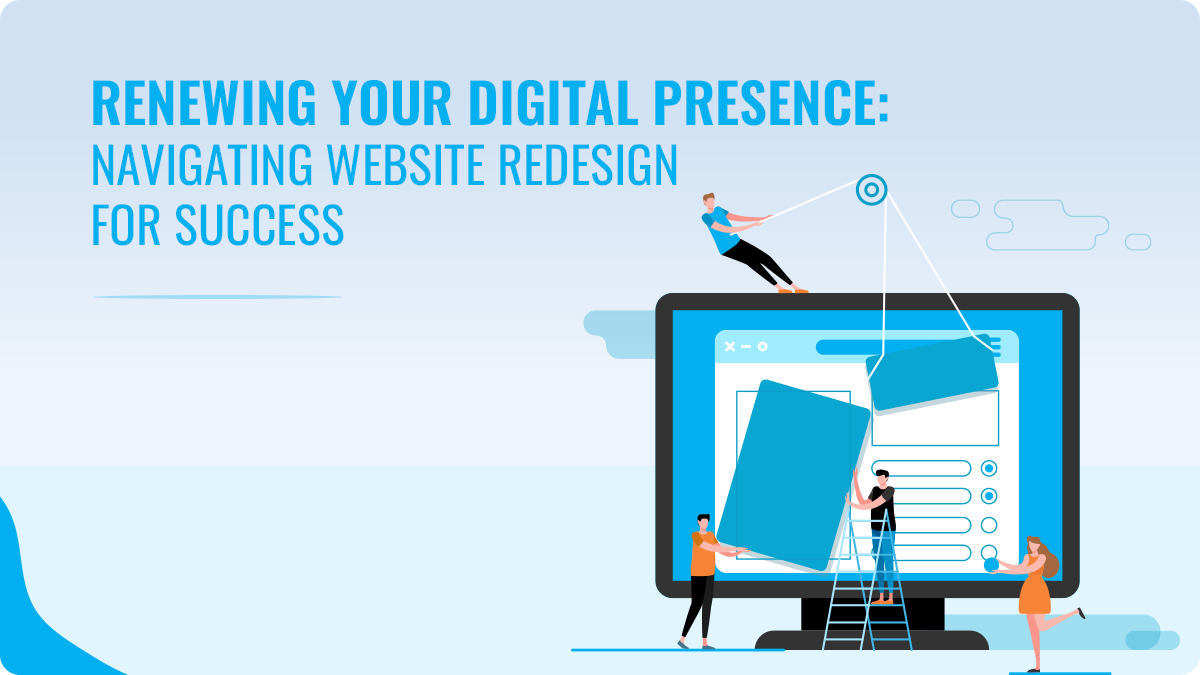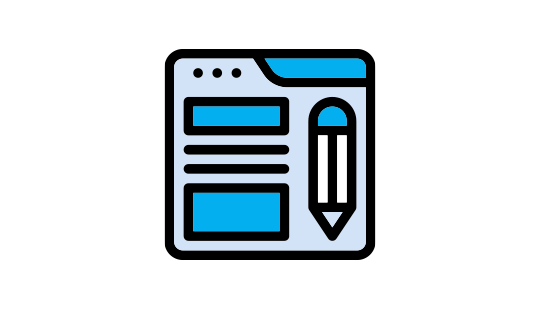Your website is the digital representation of your brand in the dynamic online environment. It serves as the foundation of your internet presence and is frequently the initial point of contact for potential customers. However, when technology develops, fashion trends change, and your company expands, there comes a point where a website makeover is not only advantageous but also necessary. This article will examine the finer points of website redesign, such as when to consider it and how to carry it out successfully.

Part 1: When to Consider a Website Redesign
1. Outdated Design and Functionality
One of the most apparent signs that it’s time for a website redesign is when your current design feels outdated and lacks the modern functionality expected by users. Clunky navigation, slow loading times, and an overall unappealing look can deter visitors and harm your brand’s credibility.
Solution: A fresh, contemporary design with responsive elements that adapt to different devices, along with streamlined navigation, can make your website more appealing and user-friendly.
2. Poor User Experience
If users find it challenging to locate information, complete actions (such as making a purchase or contacting you), or the website frequently crashes or displays errors, it’s a clear indicator that your website’s user experience is subpar.
Solution: A website redesign should prioritize user experience (UX) improvements. Conduct user testing to identify pain points and refine the design and functionality accordingly.
3. Low Search Engine Rankings
Search engines favor websites that provide valuable content, are mobile-friendly, and offer a great user experience. If your website is struggling to rank well on search engine results pages (SERPs), it might be due to outdated SEO practices or a lack of mobile optimization.
Solution: A website redesign should incorporate up-to-date SEO techniques, optimize for mobile, and ensure fast loading times to improve your search engine rankings.
4. Rebranding or Change in Business Focus
If your business undergoes rebranding, shifts its core focus, or expands into new markets or services, your website should reflect these changes. An outdated website that doesn’t align with your current business identity can confuse visitors.
Solution: Redesign your website to match your new branding guidelines, update messaging, and restructure content to align with your evolving business goals.
5. Security Concerns
The importance of cybersecurity in the present digital environment cannot be overstated. An outdated website with vulnerabilities can expose your business to cyber threats and compromise customer data.
Solution: A website redesign should include security enhancements, regular updates, and the implementation of best practices to protect against potential security breaches.
6. High Bounce Rate and Low Conversion Rates
If visitors frequently leave your website shortly after arriving (high bounce rate) or if your conversion rates are disappointingly low, it’s a sign that your website is failing to engage and convert users effectively.
Solution: Redesign your website with a focus on optimizing the conversion funnel, refining calls-to-action, and providing engaging content that resonates with your target audience.
7. Inadequate Mobile Experience
As more user’s access websites via mobile devices, having a mobile-responsive design is no longer optional. If your website doesn’t perform well on smartphones and tablets, you’re likely missing out on a significant portion of your potential audience.
Solution: A responsive redesign ensures that your website functions seamlessly across all screen sizes and devices, providing an optimal mobile experience.
Read more: 35 Fun Facts about Web Designing a Website Owner Must Know
Part 2: How to Execute a Website Redesign
Once you’ve determined that a website redesign is necessary, the next step is to plan and execute the process effectively. Here’s a step-by-step guide to help you navigate the art of website redesign:
1. Set Clear Goals and Objectives
Before diving into redesigning your website, define clear goals and objectives. What objectives do you have for the redesign? Is it improved user engagement, increased sales, or better search engine rankings? Setting specific, measurable, achievable, relevant, and time-bound (SMART) goals will guide your redesign efforts.
2. Conduct a Comprehensive Website Audit
Evaluate your current website’s strengths and weaknesses. Identify what’s working and what’s not. Analyze website traffic data, user behavior, and conversion metrics. This audit provides valuable insights into areas that require improvement.
3. Define Your Target Audience
Understanding your target audience is crucial for creating a website that resonates with your visitors. Develop detailed user personas that outline your audience’s demographics, interests, pain points, and goals. Tailor your redesign to meet their needs and preferences.
4. Information Architecture and Content Strategy
Map out the structure of your website, including navigation menus and page hierarchy. Plan a content strategy that aligns with your goals and audience. Consider creating new, valuable content while optimizing existing content for SEO.
5. Wireframing and Prototyping
Make prototypes and wireframes to help you see how the new look and layout will look. Wireframes are basic, skeletal outlines of web pages, while prototypes are interactive, functional representations. This stage helps ensure that the redesign aligns with your goals and user experience objectives.
6. Visual Design and Branding
Work on the visual design of your website, incorporating your brand’s colors, fonts, and visual elements. The design should reflect your rebranding efforts or align with your existing brand identity.
7. Development and Testing
Build the redesigned website using modern web development practices. Focus on responsive design, ensuring the site functions seamlessly across all devices. Perform rigorous testing to identify and fix any bugs, compatibility issues, or performance bottlenecks.
8. Content Migration
Migrate content from your old website to the new one while ensuring that SEO rankings are preserved. Implement 301 redirects to maintain search engine visibility and update internal and external links.
9. SEO Optimization
Optimize your website for search engines by conducting keyword research, optimizing on-page elements (meta tags, headings, etc.), and implementing best SEO practices. Make sure that a crawler can access and index your website.
10. User Testing
Conduct user testing to gather feedback on the new design and functionality. Use this feedback to make refinements and improvements to the user experience.
11. Launch and Promotion
Once you’re satisfied with the redesigned website and it has passed testing, it’s time to launch. Promote the launch on social media, through email marketing, and any other relevant channels. Monitor the site’s performance post-launch.
12. Ongoing Maintenance and Optimization
A website redesign isn’t a one-time task; it’s an ongoing process. Continuously monitor your website’s performance, gather user feedback, and make incremental improvements. Stay up to date with emerging web technologies and design trends.
Conclusion
Your website needs regular upgrades to stay useful in the digital era because it is a dynamic asset. Your ability to succeed online can be greatly impacted by knowing when to undertake a website makeover and how to carry it out. You can give your web presence new life and ensure that it continues to be a potent instrument for the expansion and success of your business by setting clear goals, comprehending your audience, and adhering to best practices in design and development.
How Can USS LLC Help You Create a Highly Engaging Design for Your Mobile App or Website?
Universal Stream Solutions has delivered award-winning projects & solutions for 8+ diverse industries. Meeting the industry standards with the most innovative design approach. We create a clever, clean & gutsy experience to maintain a balance. Our designers have an original and stylish approach.

